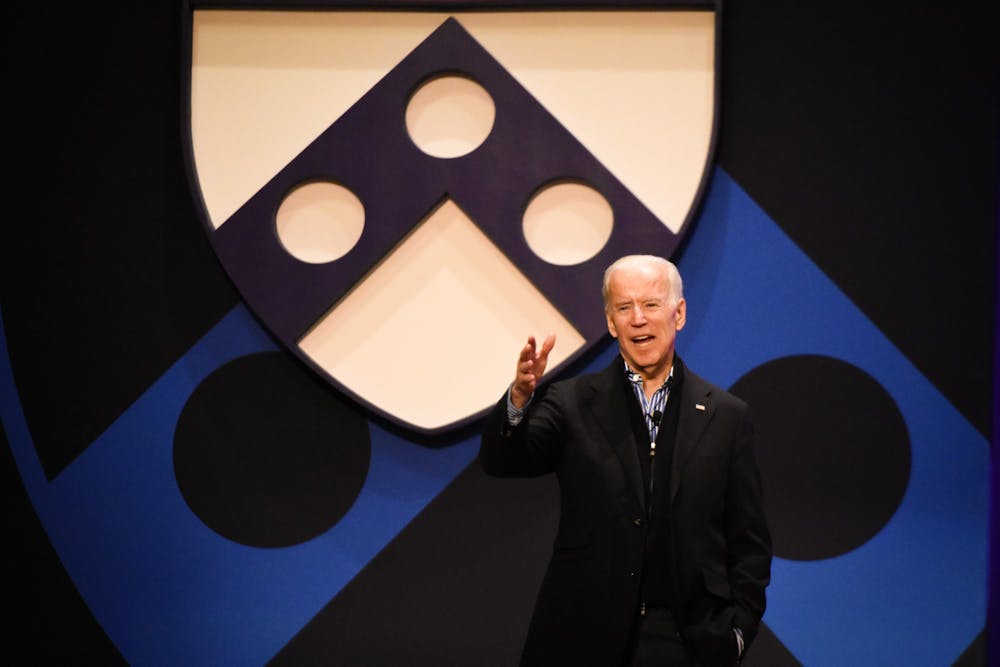A recent Penn Wharton Budget Model report analyzing President Joe Biden's student loan relief plan found that the initiative is estimated to cost hundreds of billions of dollars over the next decade.
PWBM is a nonpartisan organization that provides economic analysis of public policy initiatives, working with policymakers to highlight the financial implications of recent legislation. Their newest report, released on Aug. 26, found that the new plan will cost between $469 billion to $519 billion over the next 10 years.
Biden's debt relief program, announced on Aug. 24, will cancel debt for up to $10,000 for individuals that earn less than $125,000 per year or families that earn less than $250,000 per year, and $20,000 for Pell Grant recipients that earn less than $125,000 per year or families that earn less than $250,000 per year. The program will also extend student loan forbearance through the end of 2022 and implement a new income-driven repayment plan, which caps monthly payments based on the discretionary income for loan borrowers.
The PWBM report found that 75% of the benefit from this plan will fall to households that make less than $88,000 annually. Findings also included that loan forbearance for 2022 will cost an additional $16 billion and the new IDR program will cost an additional $70 billion. The report also suggests that additional details regarding the IDR program and associated behavioral changes could raise the plan's total cost to over $1 trillion.
PWBM conducted the research by utilizing data from the Department of Education, according to junior economist and project lead on the loan relief model Junlei Chen.
“For the loan forgiveness aspect, we summed up the current outstanding balance of the student loans and then took into account the current income driven repayment plans, which would have already forgiven some part of the loans after 20 to 25 years,” Chen said.
Despite the fact that the plan could aid the 43 million Americans that currently have student loan debt, some economists have argued that the plan represents a misuse of federal funds that could drive inflation rates higher. Some students and professors at the University spoke with The Daily Pennsylvanian to offer their initial takeaways from Biden's student loan relief plan.
Wharton professor Michael Roberts told the DP he believes that the loan forgiveness plan shifts the financial burden from one group to another, rather than appropriately addressing the root of the issue.
RELATED:
Penn Middle East Center loses all federal funding, a 'devastating' blow to its future
Penn’s endowment has grown 364.8% since 2000 — the fastest rate in the Ivy League
“While there are some nuances associated with the plan, it’s not nearly as nuanced as it probably needs to be," Roberts said. "The problem is still there. It is not going to go away — you’re just taking money from one group of people and giving it to another group of people."
Roberts said that, going forward, he believes an effective alternative option to the plan would be focusing on financial literacy education. He said that the societal expectation to make major life decisions about college without much financial training is "terribly unfair."
"A more fruitful and beneficial path to solving this problem is educating people on how to make these financial decisions," Roberts said.
Political groups on campus have also held programming to analyze the implications of Biden's policy. The Penn Government and Politics Association's discussion group, Penn Polybian Society, hosted a symposium on Sept. 8 to discuss Biden’s proposal and its potential impacts.
College senior Josh Rose, who serves as GPA's president, echoed Roberts' sentiments on the importance of encouraging students to learn more about financial literacy.
“This issue is relevant to all Penn students, because obviously we’re all college students and a lot of Penn students had to take on loans or find financial help to come to Penn,” Rose said.









